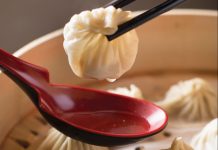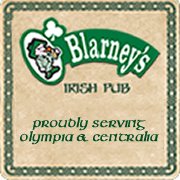When sunny days break through the Pacific Northwest’s usual clouds and rain, the outdoors beckons as a place of relaxation and recreation. For Thurston County people in the first half of the 20h century, the perfect way to spend such a day was a picnic.
Picnics in Olympia and Tumwater
Butler Cove on Budd Inlet was a popular place to visit, especially in the 1890s. For example, Olympia Collegiate Institute students had a picnic there in 1891. Sunday school students also gathered there for a picnic in June 1898, selling clam chowder for a dime a dish and 15 cents a quart.
Priest Point Park, now Squaxin Park, was created in 1905 as Olympia’s first park. It became the setting for many group and family picnics. During World War I, the park proved an ideal place to host visiting servicemen. On September 11, 1918 the War Camp Community Service Committee arranged for over 100 patients from Camp Lewis’ base hospital to visit the park for the day. Local women served a picnic while soldiers enjoyed dancing and music in the chalet pavilion.
After the war ended, the city hosted a “welcome home” picnic and barbecue for returning veterans on June 26, 1919. People were encouraged to bring enough food in their picnic baskets for an additional person, so no serviceman would go hungry. There were potato and shoe races and a tug of war between soldiers and sailors.
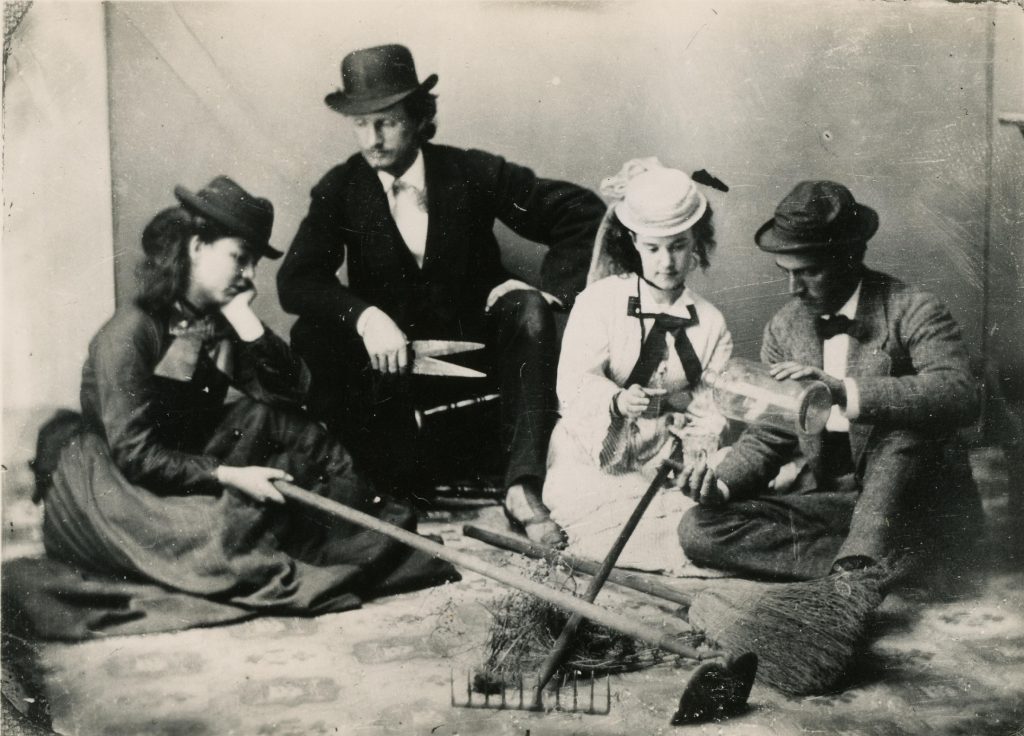
In the postwar years, veterans continued to hold picnics at the park such as an American Legion barbecue taking place there in September 1923.
The Olympia Light and Power Company opened a park and zoo at Tumwater Falls, accessible by streetcar. An ad from the Morning Olympian’s August 22, 1895 issue described how people found the area a “most delightful” place to “while away the afternoon’s hot hours with lunch basket and books” in a place that would “make envious an inhabitant of Paradise.”
Thurston County Picnics in the 1920s and 30s
With the arrival of cars, picnickers were able to venture farther afield. The Great Depression, also made picnics appealing as an affordable way for groups to gather. Typically, people brought their own basket lunches and the organization served hot coffee. Millersylvania State Park, created in 1924 and improved by the Civilian Conservation Corps in the 1930s, became a popular spot for events. For example, the Thurston County Parent-Teacher Association held a picnic and business meeting at Deep Lake in June 1934.
Other popular spots were local lake resorts, including Hicks Lake in Lacey. In a collection of resort ads from June 30, 1932, Ingle’s Sandy Beach billed itself as “ideal for family picnics” while Ineda Beach promised “beautiful picnic grounds.”
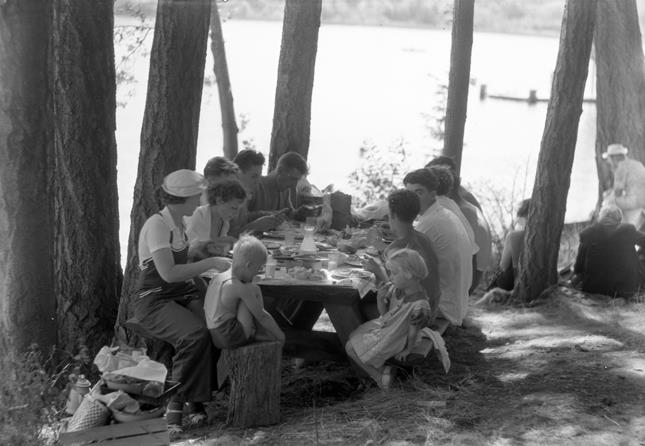
Preparing a Picnic
Stores advertised their picnic wares. “We have everything you need” vowed Barnes and Bowen, “the reliable grocers,” in a June 22, 1920 ad listing their stock for “picnic time” of paper plates, napkins, olives, jam, deviled meats, cookies, canned salmon, and canned sardines.
“Doing the Markets with Helen,” a local advertisement column, themed its June 6, 1930 article on picnics, touring local stores for their latest selections. A fresh delivery of Rhode Island Reds had just come to the State Market, perfect for fried chicken. “There’s no real reason,” Helen remarked, “it should taste any better out of doors…but there’s indisputable evidence that it does taste much better.” Cold meats were available at Le May meat market, unbreakable plates at Reder’s Grocery, butter (“an essential of any well ordered picnic”) at Piggly Wiggly, Hormel ham and Jig wieners at J.F Kearny and Co., and eggs at Skaggs Safeway. Or one “may accumulate your entire picnic basket without stepping outside” Grand Central Market.
For those who preferred greater convenience, places like the Good Eats Restaurant, 113 E Fourth Avenue even “put up” picnic lunches, in 1918.
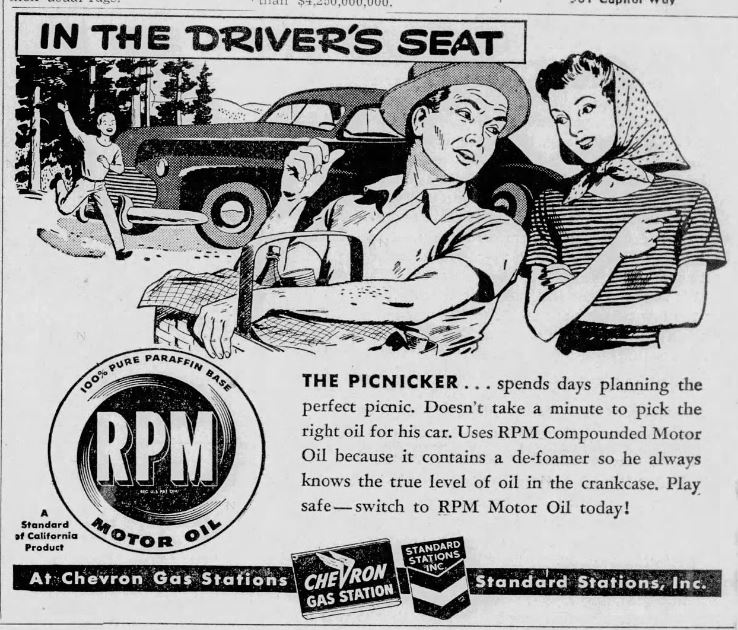
Local newspapers were full of advice for would-be picnickers. “Sandwich is king at auto picnic,” wrote a columnist on June 21, 1929 in the Daily Olympian to welcome summer, “…This is the time of year when we like to pack lunch and drive to some quiet place to enjoy it.” She recommended making prune-and-peanut-butter or celery-and-cottage-cheese sandwiches for children.
Sandwiches were something children could help make, advised the Daily Olympian “Here and Now” column on August 3, 1949: “Sandwiches are one of the easiest things to prepare in the Summertime for a picnic” and offered recipes for carrot-orange, creamy peanut, creamy ham, watercress cottage cheese and grilled tuna fish/Swiss cheese sandwiches.
“The picnic meal should be planned around some hot dish,” countered Washington State College extension nutritionist Rae Russell on July 11, 1940. She recommended sealing food like soup, chili, or stew in a vacuum jug to keep hot or serve a “covered casserole of scalloped potatoes, tomatoes or mixed vegetables” made at home and “wrapped up in layers of newspaper.”
Whatever one prefers to eat at a picnic, the words of Helen still ring true today. “Don’t cheat yourselves and families of good times this summer by limiting the number of picnics,” she wrote in her July 14, 1933 column, “It doesn’t cost a bit more to eat one’s dinner out-of-doors on the beach or lake than it does to serve it in an ordinary, warm dining room.” Have fun picnicking this and every summer!








